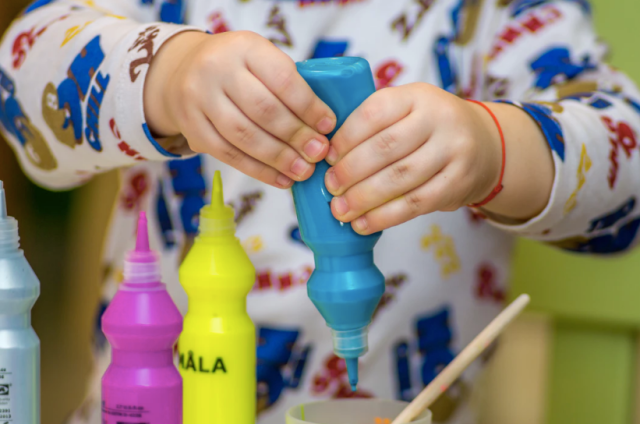Children diagnosed with autism tend to struggle with sensory stimulation, from the touch, noise, taste, or other sensitivities. Their symptoms usually include difficulty in processing this sensory information from the world around them. If they don’t know how to handle it, it can make ordinary interactions and situations quite overwhelming for them to deal with. Eventually, it may affect their daily function and isolate them from other people and the rest of the world. This is why it helps if you engage kids with autism with sensory activities to help them overcome sensory difficulties and improve their daily function.
Sensory arts and activities can help children with autism stay regulated, experience various senses in a controlled, calm, and fun way, and connect with other people better. These are seven sensory arts and crafts activities that can help kids with autism.
1. Plastic Baggy Painting
This activity is great for a starter activity to play with paint without having to actually touch it and make a big mess. Squish paint inside a Ziploc plastic bag, use multiple colors to make mixing more fun, and close the top. Tape the bag to the table and let your child paint using the mix of colors inside it. Talk to your child about the mix of colors and the images that they can create.
2. Create Personalized T-shirts
You can always have fun with laser printers by creating personalized T-shirts with your child. Prepare the design that your child wants along with the T-shirt ready for customization. Assist your child all the way through the engraving process, waiting for the machine to finish. If you know how to use the machine yourself, then you should be able to achieve the T-shirt design that your child has in mind. They should be even prouder that they’d get to wear the design that they made themselves. This activity can help develop your child’s processing of their sense of touch and sight.
3. Latex-gloved Finger Painting
Finger painting can be really fun for your child with autism, but with the latex gloves involved, it can be less messy since you won’t have to clean tiny fingers. Prepare some latex or non-latex gloves if your child’s allergic, construction paper, a container of washable paint, small containers, and an old bedsheet. To avoid a paint-filled mess, bring the activity outside. Lay the sheet down, fill the small containers with some of the paint, put the construction paper, and let your child wear the gloves. Then, let them free their creative mind and paint!
4. Sand Art
Sand can expose your kids to a different textural and auditory experience, but regular sand can be pretty dangerous to your child with autism so it’s best to create edible sand. Prepare some colorful sand, liquid food coloring, salt, Ziploc baggie, construction paper, glue, and disposable aluminum pan. You can make it more fun by playing in your backyard. Just get one of those silent generators for home use and light up your backyard, spread a blanket and a couple of cozy pillows and you have the perfect playing atmosphere.
5. Water Tub Colors
This can get quite messy, but it’s a fun activity that you can do outside. Prepare a large clear tub, soap, food coloring, and a few small containers. Kids in the autism spectrum often feel comfortable dealing with water, so this is something that they can do without difficulty. Fill the tub with water and soap and the smaller containers with colored soapy water. Guide your child on how to make different colors with the soapy water using the food coloring. This is a pretty simple activity that will teach your child about color mixing, while letting them enjoy it with their touch and sight.
6. Styrofoam Sculptures
If you have received packages with protective Styrofoam, make sure to keep them. They would make for food materials for Styrofoam sculptures, along with some toothpicks. Along with your child, you can break up the Styrofoam pieces and connect them with toothpicks, as required by the sculpture that your child has in mind. Let their imagination run free! To make the sculptures look even more impressive, you can give your child some markers to color them up. Let them take this activity with their sense of touch, sight, and hearing.
7. Bubble Wrap Painting
Bubble wraps can be more than just something that you can pop to keep your hands busy. They are also great materials for a sensory activity with children with autism. Just prepare it with a gallon of paint, an old bedsheet, a roll of packing tape, disposable aluminum pan, and a large area where your child can freely paint. Layout the bedsheet outside, put some of the paint on the aluminum pan and put it close to your child. Then, wrap your child’s feet in bubble wrap and secure them with packing tape. Lead your child to stand in the pan, then to walk, jump or run on the laid out bed sheet. With their feet, let them enjoy scattering the color around while hearing the satisfying pop of the bubbles under their feet. That should make for some great sensory input through their sight, hearing, and touch.
Try these activities with children with autism and help them deal better with sensation overload. Help introduce the fun side of the otherwise overwhelming world to your child by doing these projects.











